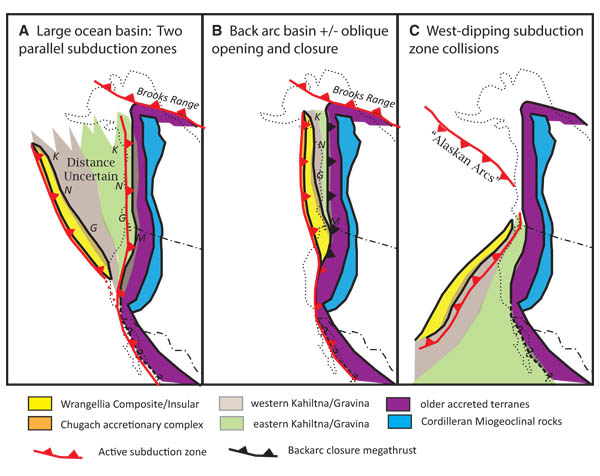
Figure 1.
End-member models for Early Cretaceous paleogeography. (A) and (B) are both east-dipping subduction models distinguished by the magnitude of the east-dipping megathrust between the Insular (Wrangellia composite terrane [WCT]) and Intermontane terranes (purple); either as a normal subduction zone (A) or a megathrust closing a backarc basin (B) that opened in the Jurassic after an earlier collision of the Insular terrane. Marine basins: K—Kahiltna; N—Nutzotin; G—Gravina; M—Methow. (C) West-dipping subduction zone between the Insular (WCT) and Intermontane terranes (purple) after Sigloch and Mihalynuk (2017). In this model, the Insular terrane migrates from an offshore position during Late Jurassic time and collides far to the south with a north-to-south closure during mid-Cretaceous time. Note also the inferred polarity of north Pacific subduction zones in this model (labeled Alaskan arcs) and distinctions with subduction polarities in models A and B. Figure modified from Kapp and Gehrels (1998).